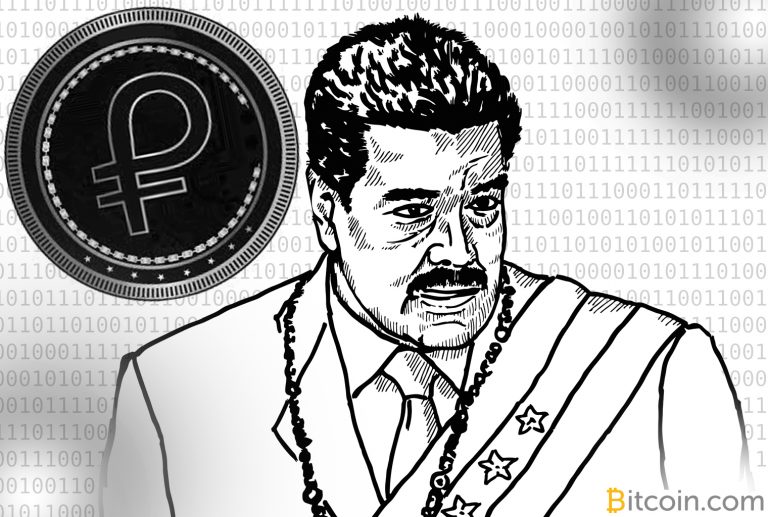OTC Groups and State-Sanctioned Exchanges Start Trading Venezuela’s Petro
source: Bitcoin News
2019. Apr. 22. 22:01

Last February, news.Bitcoin.com first reported on the Venezuelan cryptocurrency the petro (PTR) launched by President Nicolas Maduro. Initially, many media reports assumed the digital currency might be phony or nonexistent. However, recent data from a few exchanges and from Venezuelans trading the asset on social media suggests the nation-state issued cryptocurrency is quite real and that locals are trading PTR regularly for goods and services.
Also read: Darknet Users Allege Wall Street Market Exit Scammed, Possibly Snatching $30M
Venezuelans Are Swapping the Petro on Exchanges and Social Media
Since the death of Hugo Chavez, when President Nicolas Maduro took over in 2013, Venezuela’s economy has spiraled out of control. At the time of writing, Venezuela’s inflation rate is a whopping 1,623,656%, making the nation state’s fiat currency, the bolivar, pretty much worthless. In an attempt to provide a solution, Maduro created the petro (PTR) cryptocurrency which is allegedly backed by Venezuela’s oil reserves. Some Venezuelans believe that eventually the bolivar will be decommissioned and citizens will be forced to use the petro. According to data issued by the government, PTR is supposed to be valued at 246,332 bolivars or $60 per PTR, but this isn’t the case right now. The digital currency also didn’t have a block explorer when the price base was increased by Maduro and most Venezuelans hadn’t seen it being used in the real world.
Our last petro report, however, showed the asset has finally seen the light of day and that Venezuelans are able to purchase PTR through the government agency Sunacrip. Moreover, the government has allowed cryptocurrencies like BTC and LTC to be used for payments in order to acquire petros. Sunacrip even created a state-sanctioned crypto remittance platform that supports BTC, LTC, and other cryptocurrencies. There is a block explorer available now that has an extremely glitchy interface, but Sunacrip has insisted that a fully functional petro block explorer will be released on April 30.
Amberes exchange. The petro cryptocurrency has been selling between 0.00555-0.007411 BTC on various exchanges.There is also a variety of exchanges Sunacrip has made available to the public so people can buy and trade their PTR at state-sanctioned trading platforms. This includes authorized trading facilities such as Cryptoexca.io, Afx.trade, Amberes, Bancarexchange.io, Cryptiaexchange.com, and Criptolago.com.ve. The exchange rate for 1 petro varies on each exchange but one PTR is swapping for roughly $30-40 (0.00555-0.007411 BTC) and the cryptocurrency is paired with a variety of digital assets. Signing up for one of these trading platforms cannot be easily done, as the identification process is quite strict. For instance, the Amberes exchange requires a state-issued identification number, telephone number, bank statements, and invoices from private services showing a residential address. Some platforms like Bancarexchange allow a social media account to sign up with in addition to mandatory identification papers.
Some screenshots of the wallets people use to send and receive the petro (PTR).OTC Telegram Groups and Facebook Tag Sales
Even though PTR is trading for much less than $60, Sunacrip’s official newsletter states that the Bolivarian Republic of Venezuela has had a “solid, reliable, transparent and inclusive system” since the petro introduction in 2018. Further, Sunacrip also scorns the “attacks at the national and international level, with sanctions and a campaign of discrediting the nation both internally and externally.” In addition to the petro being sold on government approved trading platforms, PTR is being traded on social media channels like Facebook and Telegram. On Facebook, there are lots of tag sale groups (called El Perolero) where people are exchanging goods and services for money. There are many ads these days scattered within these groups that show sellers will gladly accept the petro. One specific FB-based El Perolero marketplace group sees upwards of 9,000 unique ads a day and has over 293,000 members.
The Petro Exchange Telegram channel.There’s also Telegram-based over-the-counter (OTC) groups where people can purchase and sell PTR peer-to-peer. The Petro Exchange group has roughly 321 members and the purpose of the group is to “allow people to buy and sell petro using any digital currency, in addition to the commercialization of any product or service using petro as a form of payment.” However, in order to interact with the PTR dealer, buyers are required to privately send them “identity documents plus a selfie with the document in hand and a handwritten paper with the date and time, all fully readable.”
Over the last six months, there’s been a lot of curiosity aimed at the petro cryptocurrency and now Venezuelans are getting a taste of what it’s like to use the asset and what it takes to obtain the petro. With all the government-sanctioned exchanges made available, the latest remittance platform, and the upcoming revamped block explorer, the incumbent Venezuelan government led by Maduro seems confident that the petro is here to stay.
What do you think about the petro? Let us know what you think about this subject in the comments section below.
Images credits: Shutterstock, Pixabay, and various exchanges.
At news.Bitcoin.com all comments containing links are automatically held up for moderation in the Disqus system. That means an editor has to take a look at the comment to approve it. This is due to the many, repetitive, spam and scam links people post under our articles. We do not censor any comment content based on politics or personal opinions. So, please be patient. Your comment will be published.
The post OTC Groups and State-Sanctioned Exchanges Start Trading Venezuela’s Petro appeared first on Bitcoin News.





